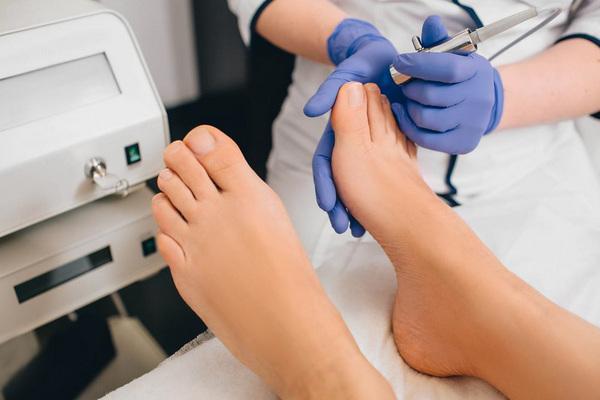Toenail fungus is a disease that can occur in both children and adults. How to cure? How to prevent its formation? Below you will find answers to these and other questions.
Nail fungus: causes of formation
Toenail fungus is highly contagious and, at the same time, quite difficult to treat. Toenails are more often affected, namely the nails of the first and fifth fingers, since they are in direct contact with the shoes. It can appear both on one nail plate and spread to the next one. The most common causes of mycosis are inadequate or inadequate hygiene of the hands and feet, which leads to the development of a fungal infection. Conditions conducive to the development of mycosis include damage to the nail plate, cutting nails too short, wearing too tight shoes, and frequent manicure with various types of varnish.
Toenail fungus: where did it come from?
Most often, onychomycosis is associated with the occurrence of mycosis of the entire foot. Studies show that many Poles are struggling with this disease, but largely ignore the symptoms of mycosis, expecting it to disappear over time. Unfortunately, signs of a fungal infection such as itching, burning, and cracking of the skin will not go away by themselves. Additionally, onychomycosis is manifested by discoloration of the plate, its thickening and a tendency to fragility and fragility. Be sure to consult a dermatologist, who will recommend appropriate treatment. Moreover, even after mycosis is cured, it is necessary to strictly follow the instructions and regularly observe hygiene, because mycosis is a condition that often recurs.
Where does toenail fungus come from? Well, the most common cause is an infection in one of the places like the pool, sauna, or shower. You can become infected with mycosis using someone else’s shoes or unsterilized pedicure tools. High humidity and heat also contribute to the development of the athlete. This means that wearing shoes that promote perspiration on your feet frequently and for long periods of time increases the risk of fungal infection. Some diseases also contribute to the occurrence of such infections – mainly diabetes, obese people or people prone to anemia, are prone to mycosis of the feet and nails.
Nail fungus: treatment
Treatment of onychomycosis requires significant effort, and the results only take time. Medical intervention is required. Home remedies, many of which are available online, are usually ineffective and, moreover, can be dangerous and exacerbate symptoms.
Treatment of onychomycosis takes many forms. Depending on the doctor’s recommendations, you can limit yourself to the use of topical agents, but sometimes it is necessary to take oral agents. Several substances are available on the market that are effective against fungal infections. For therapy to be effective, first, it is necessary to determine what type of infection we are dealing with. This requires a mycological examination to determine if the symptoms are the result of a yeast, dermatophyte or mold infection.
In the case of onychomycosis, treatment is supplemented by topical drugs. They are usually in the form of nail polish or cream containing active ingredients. These types of drugs, in more severe cases, cannot fight athlete’s foot on their own, but they work very well with oral medications.
For very persistent recurrent onychomycosis, your doctor may also suggest surgery. It consists in removing the infected nail plate. During the procedure, the doctor spotless the nail shaft, the patient recovers by taking oral medications, and comes for the next nail shaft cleaning procedure once a week.
An increasingly popular and definitely less invasive treatment for onychomycosis is laser therapy, which is recommended by many dermatologists and orthopedists.








